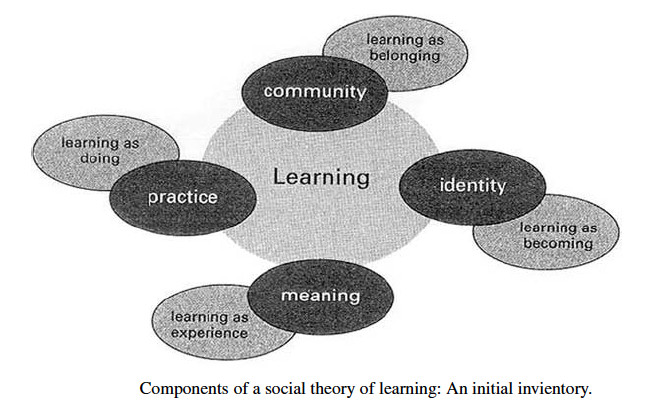Observation Practice
Situated Learning and Communities of Practice
Two learning theories that are related to observation practice are Lave and Wenger’s Situated Learning Theory and Communities of Practice. Both theories build on social learning theory, which posits, “new behaviors can be acquired by observing and imitating others.1 According to situated learning theory, learning is unintentional and situated within authentic activity, culture, and context. By “situated,” Lave meant that learning normally occurs and is embedded within an activity, context and culture.2
Within Lave and Wenger’s theory, learning takes place through a process of participation in communities of practice. A community of practice is “a living context that can give newcomers access to competence and also can invite a personal experience of engagement by which to incorporate that competence into an identity of participation.” 3
As newcomers join such communities via a process of ‘legitimate peripheral participation’—or learning by immersion in the new community and absorbing its modes of action and meaning as a part of the process of becoming a community member-- they learn.4
Components of Social Learning Theory
According to Wenger there are four components of the social theory of learning. These components are Meaning, Practice, Community, and Identity.
Meaning is a way of talking about our ability to experience the world as meaningful. Practice is a way of talking about shared historical and social resources, frameworks and perspectives that sustain mutual engagement in action. Community is a way of talking about the social configurations in which our enterprise is defined and our participation is recognizable as competence. Identity is a way of talking about how learning changes who we are.5
The diagram below illustrates Wenger’s structuring framework for social theory of learning.

Using Situated Learning theory as a framework, educators need to find ways to present knowledge in authentic contexts or in settings and situations that would normally involve that knowledge. For example, a professor who is passionate about training students to be elementary school teachers, will find the best setting whereby his/her students can become involved in a “community or practice“ i.e., school, where the student through observation, collaboration and social interaction with members of the community of practice acquire certain beliefs, behaviors and skills needed to succeed in his/her chosen field. The student enters the community as a beginner or novice and moves from the periphery of a community as an observer, to its center. As he or she becomes more active and engaged within the culture, he or she eventually assumes the role of an expert.

Reference List
2. J. Lave, J and & E. Wenger, Situated Learning: Legitimate Peripheral Participation. (Cambridge, UK: Cambridge University Press,1990).
3. Mellony Graven and Stephen Lerman, review of Communities of practice: Learning, meaning and identity by E. Wenger, (1998), accessed July 8, 2018, https://bit.ly/2Lvphid
4. Ibid.
5. Ibid.
